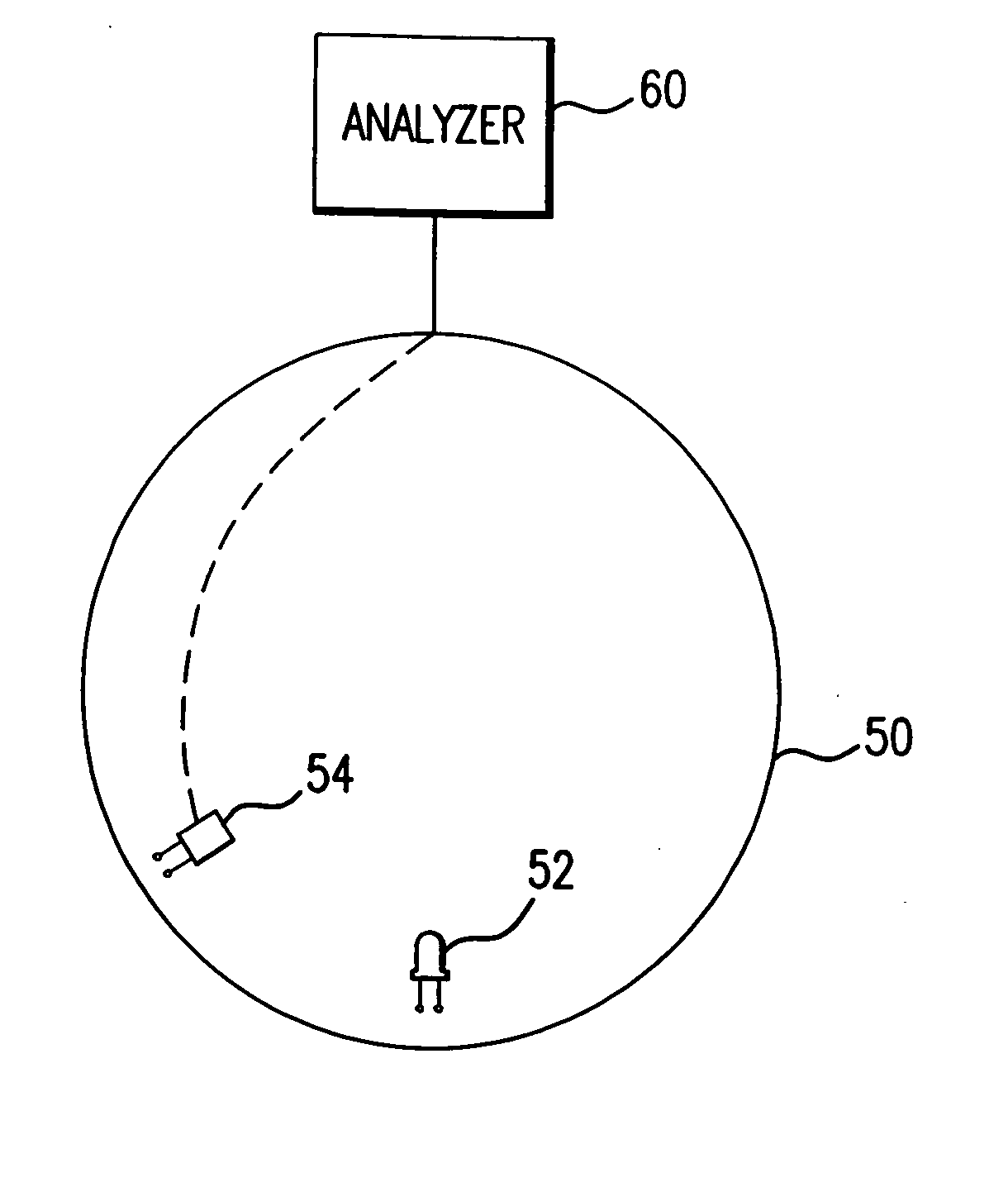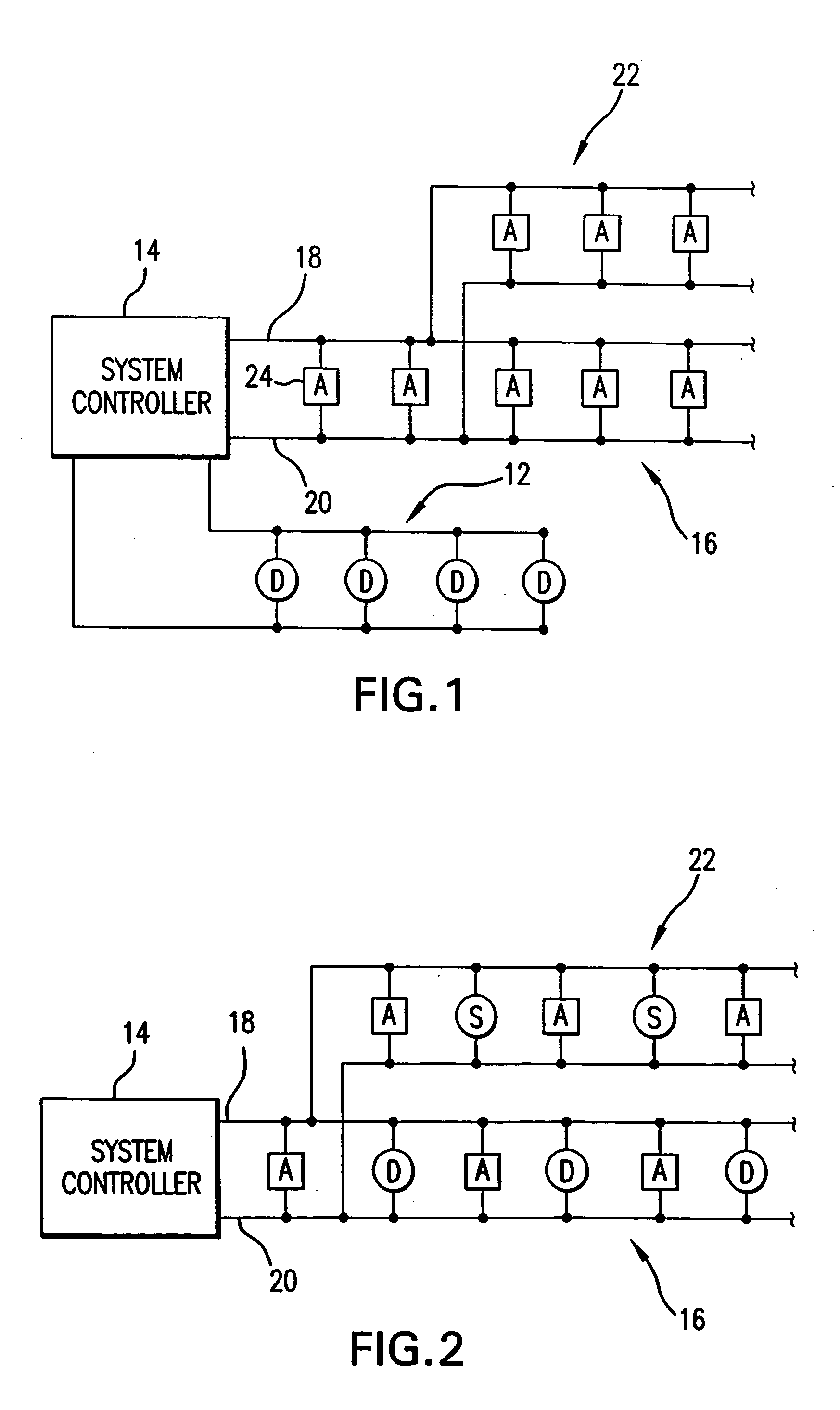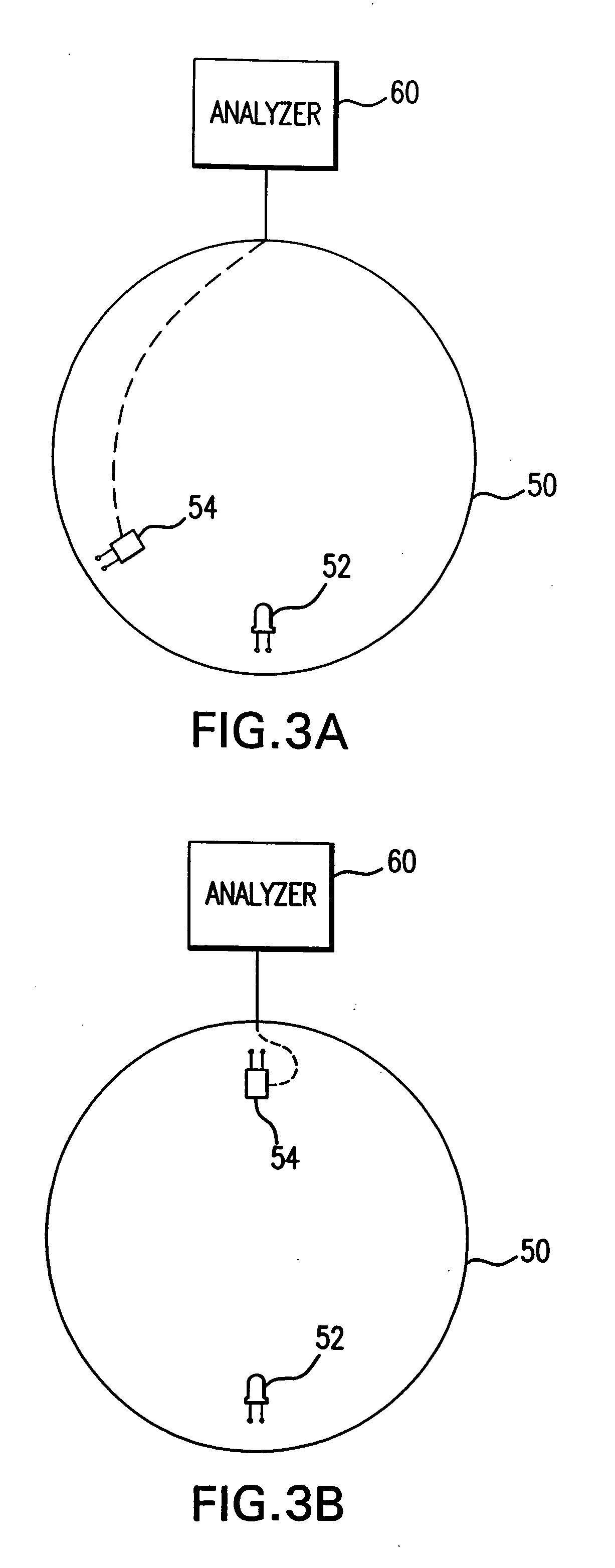Multiwavelength smoke detector using white light LED
- Summary
- Abstract
- Description
- Claims
- Application Information
AI Technical Summary
Benefits of technology
Problems solved by technology
Method used
Image
Examples
Embodiment Construction
[0030] A description of preferred embodiments of the invention follows.
[0031] A system embodying the present invention is illustrated in FIG. 1. As in a conventional alarm system, the system includes one or more detector networks 12 having individual alarm condition detectors D which are monitored by a system controller 14. When an alarm condition is sensed, the system controller 14 signals the alarm to the appropriate devices through at least one network 16 of alarm notification appliances A, which may include, for example, a visual alarm (strobe), an audible alarm (horn), a speaker, or a combination thereof.
[0032] As shown, all of the notification appliances are coupled across a pair of power lines 18 and 20 that advantageously also carry communications between the system controller 14 and the notification appliances 24.
[0033]FIG. 2 illustrates an alternative embodiment of the present invention wherein the detectors D are placed on the same NAC 16 as the notification appliances...
PUM
 Login to View More
Login to View More Abstract
Description
Claims
Application Information
 Login to View More
Login to View More - R&D
- Intellectual Property
- Life Sciences
- Materials
- Tech Scout
- Unparalleled Data Quality
- Higher Quality Content
- 60% Fewer Hallucinations
Browse by: Latest US Patents, China's latest patents, Technical Efficacy Thesaurus, Application Domain, Technology Topic, Popular Technical Reports.
© 2025 PatSnap. All rights reserved.Legal|Privacy policy|Modern Slavery Act Transparency Statement|Sitemap|About US| Contact US: help@patsnap.com



